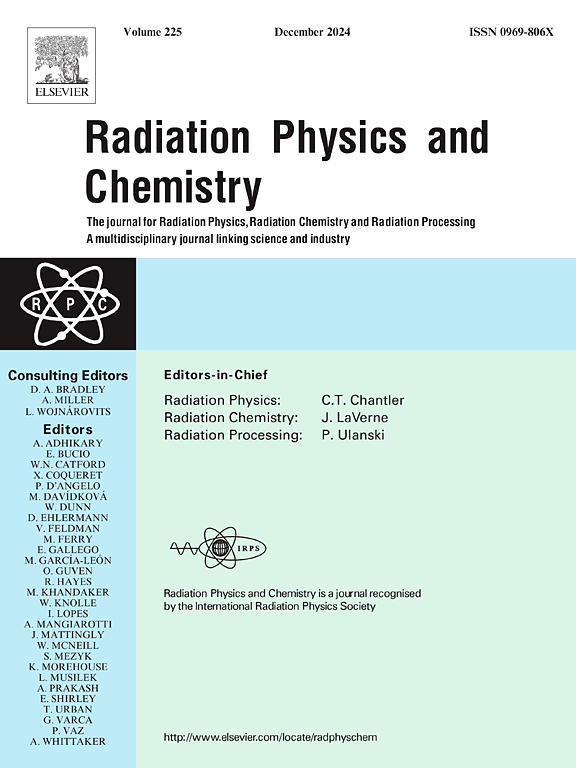Luminescence characteristics of bismuth borate glass doped with different rare earth A2O3 (A = Ce, Nd, Sm)
IF 2.8
3区 物理与天体物理
Q3 CHEMISTRY, PHYSICAL
引用次数: 0
Abstract
In this study, we prepared bismuth borate (BBi) glasses doped with various rare earth oxides using the melt quenching technique approach, having glass composition 50Bi掺不同稀土A2O3 (A = Ce, Nd, Sm)硼酸铋玻璃的发光特性
在本研究中,我们采用熔体淬火技术制备了掺杂多种稀土氧化物的硼酸铋(BBi)玻璃,玻璃成分为50Bi2O3-50B2O3-1A2O3 (A= Ce, Nd和Sm)。对合成的玻璃样品进行了物理、热、光谱等方面的检测。傅里叶变换红外光谱证实了稀土在玻璃中产生结构团振动(BO3和BO4)。掺Ce或Sm离子的玻璃的热稳定性和化学稳定性高于掺Nd离子的玻璃,这与FTIR光谱中观察到的N4 {BO4 / (BO4 + BO3)}单位有很好的关系。所研究的玻璃样品的折射率值表明它们可以捕获光,使它们成为用作光纤核心材料的潜在独特选择。
本文章由计算机程序翻译,如有差异,请以英文原文为准。
求助全文
约1分钟内获得全文
求助全文
来源期刊

Radiation Physics and Chemistry
化学-核科学技术
CiteScore
5.60
自引率
17.20%
发文量
574
审稿时长
12 weeks
期刊介绍:
Radiation Physics and Chemistry is a multidisciplinary journal that provides a medium for publication of substantial and original papers, reviews, and short communications which focus on research and developments involving ionizing radiation in radiation physics, radiation chemistry and radiation processing.
The journal aims to publish papers with significance to an international audience, containing substantial novelty and scientific impact. The Editors reserve the rights to reject, with or without external review, papers that do not meet these criteria. This could include papers that are very similar to previous publications, only with changed target substrates, employed materials, analyzed sites and experimental methods, report results without presenting new insights and/or hypothesis testing, or do not focus on the radiation effects.
 求助内容:
求助内容: 应助结果提醒方式:
应助结果提醒方式:


